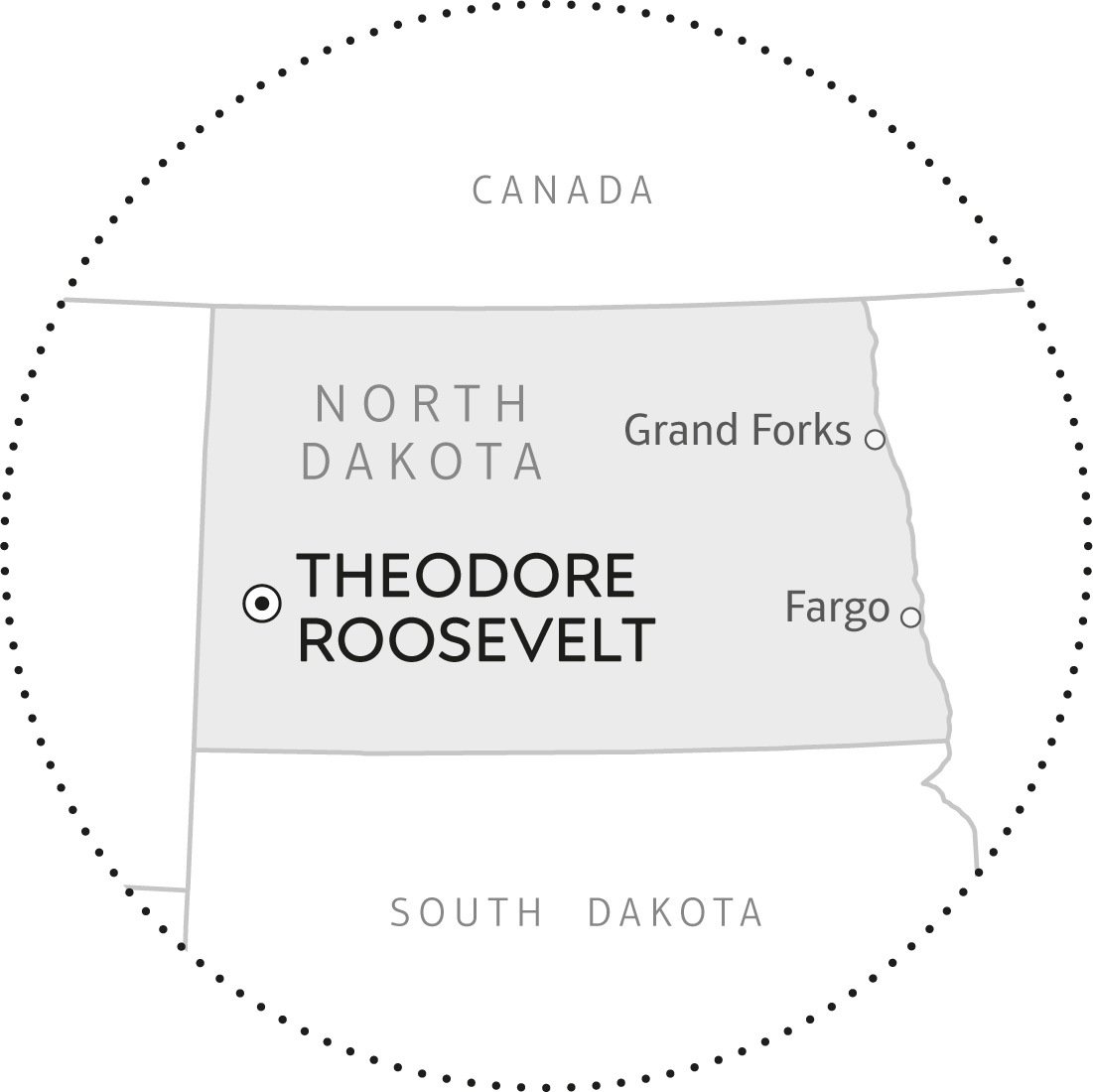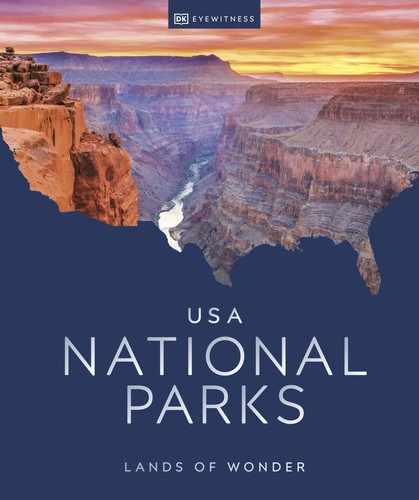
North Dakota
THEODORE ROOSEVELT
ESTABLISHED 1978
Tucked away on the prairie grasslands of western North Dakota are some of Earth’s great natural treasures. Colorful badlands follow the bends of a crooked river, while fabled Great Plains animals such as bison, cougars, more than 186 types of bird, and even wild horses, thrive in diverse microclimates, from dry slopes to wet woodlands.
“It was here that the romance of my life began.” So said Theodore Roosevelt, “the conservation president,” when musing on the restorative time he spent in the Dakota Territory. Spend time here, and it’s easy to share the love. The Little Missouri River, which began life as several small streams 65 million years ago, carves colorful stripes into a rolling landscape that looks like it’s been brushed onto canvas by a master painter. Welcome to one of the best-kept secrets in the national park system.
The park’s South Unit is the most widely visited and accessible, thanks to a 36-mile (58-km) scenic loop drive, with overlooks of iconic sites like the Painted Canyon.

The craggy, rugged landscape of the badlands stretches for miles
A national heritage species
Herds of wild (technically, feral) horses with windswept manes roam the park’s grassy expanses. Their impact on the culture of the West cannot be overstated, particularly for the Plains Indians, who became mounted hunters after the Spanish reintroduced horses to North America. Today’s herd, which numbers between 70 and 120 animals, is one of the few running free in the national parks. This area is also the best bet for spotting the big game wildlife that made the region famous.
Off the beaten path
The North Unit offers picturesque views of the Little Missouri, and the surrounding trees provide a nutrient-rich diet for medium-sized animals. Here you’ll find great camping and backcountry trails, as well as the odd Cannonball Concretions, smooth, mostly round geologic formations that look like cannonballs.
Elkhorn Ranch makes up the third unit. Markers outline the grounds of the old cattle ranch, while walking paths follow the perimeter of the homestead. Fittingly, the man who preserved more federal parkland than any other president gave his name to the only park named for one person.
PARK PIONEERS
Theodore Roosevelt
In 1884, Roosevelt moved to the Dakota Territory after his wife and mother died on the same day. He built Elkhorn Ranch and explored the Little Missouri on horseback. Teddy left in 1897 and became president in 1901, saying he could not have done so “had it not been for my experience in North Dakota.”
![]()
Early summer is prime time for wildflower viewing, with the peak season hitting in June and July.
If you have…

An hour ▷ The Elkhorn Unit is the most off-the-beaten-path of the park’s three units, with its unspoiled, wide-open landscape, just what drew Roosevelt here in the first place. With no visitor center, you’re left to your own devices to plot your path amid this peaceful countryside.

A day ▷ The scenic drive in the South Unit is a trip in itself, with wildlife-watching often best done from the car. Here, too, you’ll find easy self-guided hikes that can be just a half-mile or a mile long. Ranger-led tours include full-moon walks.

A week ▷ Take in the beauty of the South Unit, explore historic Elkhorn, and camp in the North Unit. The 28-mile (45-km) Scenic Drive through the Badlands contains must- see Riverbend Overlook and Oxbow Overlook.

The free-roaming feral herds are considered part of the historic landscape
